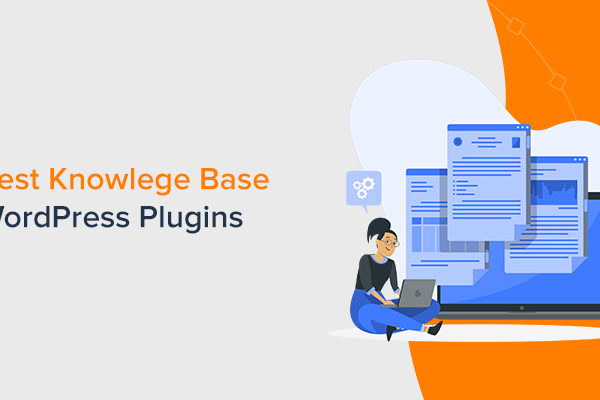? The cost of shopping cart abandonment
There have been many conflicting dollar figures published around the cost of cart abandonment, making it really difficult to gauge what might be the true cost to online retailers. Here’s a brief sample:
Tinuiti (formerly cpcstrategy) research from 2014 suggests cart abandonment contributes to over $18 billion in lost sales each year. [8] Meanwhile, a Q3 2016 PYMNTS.com report cites that in 2014, consumers left $4 trillion in merchandise in shopping carts. [9]
In 2018, Barclaycard research revealed Brits abandon online baskets worth almost £30 a month, potentially resulting in more than £18 billion of lost sales each year. The most abandoned items include knitwear, leather goods, lingerie and headphones. [10]
Oft-cited Forrester research that’s difficult to verify cites the estimated total of annual abandoned shopping cart revenue will reach $31 billion dollars.
Despite the wild variances in the figures, a couple of things are clear: the amount of money lost due to cart abandonment is growing, and ecommerce sites should look at strategies they can put in place to recover these losses.
?♂️ Why should I care about shopping cart abandonment statistics?
With shoppers abandoning 1 in 7 shopping carts, it’s good to know where your ecommerce business stands. For one thing, knowing your shopping cart abandonment rate might give you peace of mind if you’re sitting around the 70% mark — it’s not just your store, but most stores that are dealing with lost sales!
Your store’s rate will give you an overall indication of how your store is performing — your product offering, checkout process, and the availability of information about pricing and shipping on your site. These are all important elements of any ecommerce store.
You might be wondering what is a good shopping cart abandonment rate? While the research indicates the average shopping cart abandonment rate is around 70%, your rate may be higher or lower.
A low shopping cart abandonment rate indicates that you’re providing shoppers with a great user experience. Customers like your products, your site is easy to navigate, and the checkout process is smooth sailing.
If your cart abandonment rate is high, it means a large number of shoppers are starting the checkout process but failing to follow through and complete the transaction. The items being left behind in carts are potential revenue you’re missing out on, impeding your goal of maximizing your profits.
? Six ways to reduce your shopping cart abandonment rate
The first step is to understand why customers are abandoning their carts. This means digging into your Google Analytics data (and producing enhanced ecommerce reports), surveying your shoppers, reviewing support and live chat records, running usability testing for your store, or even reaching out to shoppers individually for feedback.
Similar, it’s important to note the popular cause-specific reasons we explored above — extra costs too high, creating an account, and complicated checkout process, among others — and determining whether they too might be contributing to your high abandonment rate.
Once you’ve determined the primary reasons driving your high shopping cart abandonment rate, here are some strategies worth implementing:
1. Reduce price shock
The number one reason why people abandon carts, after “just browsing,” is unexpected costs related to shipping, fees, and taxes. Often, a customer will start adding items to their cart, only to discover later that the shipping fees are too high, or they have to pay an import tax or other fees.
To reduce price shock, make sure your shipping costs and any related taxes and fees associated with delivery are transparent. This might mean creating a “Shipping and Delivery” page for your site, updating your FAQ to outline your return policy, and/or adding a shipping calculator to your product pages. These solutions will help minimize surprises for shoppers at checkout.
Also, consider providing multiple payment options for customers. While credit card and PayPal payments are fairly common, there may be other payment methods your shoppers would prefer to use.
2. Provide a guest checkout option
The second most popular reason for cart abandonment is “The site wanted me to create an account.” So don’t force customers to sign up to your site, give them the option to check out as a guest.
WooCommerce provides a guest checkout option built-in. To enable, go to WooCommerce → Settings → Accounts & Privacy → Guest checkout:

This option allows customers to check out without creating an account. Orders will not be tied to a user account in WordPress.
Asking customers to create an account, come up with a password, fill in personal information not related to their purchase… it all makes the buying process take longer. When the customer has already decided they want to buy from you, don’t get in their way.
The information that customers enter during the checkout process, such as shipping details, can be saved. You can ask them after they’ve completed their order whether they would like to create an account for future orders.
3. Review and optimize your checkout flow
When’s the last time you stepped through your checkout process? It’s crucial that customers are able to easily navigate your checkout flow to complete their transaction. If it’s long and complicated with lots of forms, or has a complicated user experience, shoppers will be turned off and less likely to check out.
User testing tools like Hotjar and watching videos of people interacting with your site (Userbrain, Fullstory, etc.) can help you determine where you might be going wrong with your checkout process.

It’s also important to regularly test your checkout to make sure it’s actually working. Sometimes, design and code changes can break your checkout. Tools like Robot Ninja for WooCommerce can automatically test your checkout and send you an email notification when it’s not working.
4. Increase trust
Shoppers need reassurance when it comes to security, especially as “I didn’t trust the site with my credit card information” is the number five reason for cart abandonment.
In the US, ecommerce credit card fraud is nearly an inevitability, with 49% of consumers falling victim to credit card fraud. Unfortunately for merchants, the obvious costs of fraud aren’t the only costs. According to Riskified research, 49% of customers reported that they don’t return to an online retailer after a fraud incident has taken place, meaning the merchant will pay the cost of the fraud and lose future customers. [11]
There are two ways you can improve trust in the buying process and show customers that their information is secure:
- Ensure your site has a valid SSL certificate. Google is enforcing HTTPS, so if your certificate isn’t properly installed or it has expired, shoppers will see a warning message in Chrome telling them the connection isn’t secure.
- Display trust symbols from well-known security companies, e.g. VeriSign, Truste, Norton. An Actual Insights survey found that 61% of shoppers didn’t buy because a trust logo wasn’t shown, and over 75% said they didn’t buy because they didn’t recognize the logo used. [12]
5. Send abandoned cart emails
One of the most powerful tactics for recovering abandoned carts is sending emails to remind people about what they left behind. According to Barilliance, sending an abandoned cart email within 24 hours can help you recover 20.3% of sales. [13]
The stats around cart abandonment emails are remarkable. According to SalesCycle, 46.1% of people open abandoned cart emails, 13.3% click inside the emails, and of those clicks, more than 35% end up buying something. [14] The global conversion rate for cart abandonment emails is 18%, with some retailers achieving conversion rates as high as 40%. [13]
To give you a successful real-world example, prior to GDPR, CodeinWP’s sister site ThemeIsle sent a series of three recovery emails over five days to potential customers:
- After 60 minutes. Subject line: “Forgot something? It looks like you have items in your cart…”
- After 24 hours. Subject line: “What’s that in your shopping cart?”
- After 5 days. Subject line: “Are you sure? One last reminder about the items in your cart… (including a 10% welcome discount)”
The results speak for themselves (and are better than what SalesCycle suggests):
- First email: Opens 50%, clicks 21%
- Second email: Opens 41%, clicks 3%
- Third email: Opens 39%, clicks 8%
CodeinWP’s advice on effective email marketing to recover carts includes:
- Timing – send your first email ASAP
- Frequency – send up to three abandoned cart emails
- Great imagery – include the images of the products
- On-brand copy – make sure you’re not sending generic copy
- Incentives – give people a reason to come back
- Mobile – make sure your emails look good on mobile
To send cart recovery emails, you’ll need to have the shopper’s email address. This means you’ll need to ask shoppers for their email at the start of the checkout process. (You’ll also need to ask them for consent to join your email list — a requirement since the introduction of GDPR.)
It’s also crucial that you check if the shopper has changed their mind and made a purchase after all before you send the first recovery or any subsequent emails. You don’t want to remind them to make a purchase that they’ve already made.
6. Use social proof
Product reviews can generate social proof, which is the psychological phenomenon where people assume the actions of others indicate how we should behave. That is, we tend to think that if a lot of people do something or like something, it must be right. This phenomenon is driven by the assumption that other people have more or better information.

For customers who are on the fence about whether to buy from you — especially first-time shoppers — social proof can help swing them towards making a purchase. Reading positive reviews on your site will help ease any anxiety.
There are many ways you can add social proof to your site:
- Ask customers to review your products. You could do this via email, Facebook, or review sites.
- Display reviews on important pages, such as product and landing pages.
?️ Wrapping up
It would be nice to live in a world where a 100% conversion rate is achievable, right? But the fact is, your ecommerce site is going to experience some level of cart abandonment.
The important thing is to determine what that rate is, understand what’s contributing to the cart abandonment, and start putting in place strategies to recoup your lost sales.
Have you experienced cart abandonment? Share your cart abandonment rate below and what you’re doing to improve it — your experience may help others!












